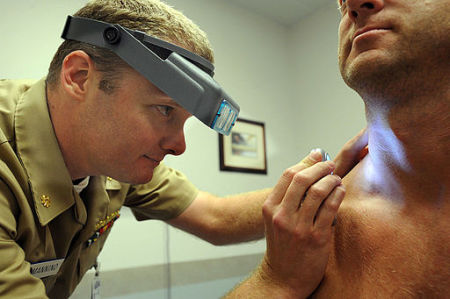AI Algorithm Can Now Identify Skin Cancer as Accurately as Doctors
In a major boost to universal healthcare access, Stanford researchers have trained an algorithm to diagnose skin cancer with the same accuracy as dermatologists.

Skin cancer, or Melanoma, is the most common form of cancer in the U.S. and it can prove to be fatal if not detected in its early stages. Currently, the diagnosis of skin cancer is done by visual examinations, and in certain cases a biopsy, carried out by dermatologists. But lack of money or time prevents a significant number of people from getting a strange mole or skin lesion checked out by a professional doctor.
A group of Stanford researchers sought to solve this problem by creating an artificially intelligent algorithm that could visually detect (using a smartphone camera) signs of skin cancer. They used a pre-existing Google image recognition algorithm originally intended to differentiate between cats and dogs and re-worked it to diagnose skin conditions instead. In order to do so, the researchers imbued the algorithm with deep learning capabilities -- a type of machine learning in which the computer is trained to identify a problem instead of having the answers pre-programmed into it.
"We made a very powerful machine learning algorithm that learns from data," said Andre Esteva, co-lead author of the paper and a graduate student in the Thrun lab. "Instead of writing into computer code exactly what to look for, you let the algorithm figure it out."
The researchers then trained the algorithm to identify skin cancer by going through a database of nearly 130,000 skin lesions representing 2,000 different diseases. The algorithm performed with surprising accuracy right from the first test, being able to identify and classify the various types of skin conditions it was tasked with.
"We realized it was feasible, not just to do something well, but as well as a human dermatologist," said Sebastian Thrun, an adjunct professor in the Stanford Artificial Intelligence Laboratory. "That's when our thinking changed. That's when we said, 'Look, this is not just a class project for students, this is an opportunity to do something great for humanity.'"
The final product, which was published on January 25 in the journal Nature, was then pitted against 21 board-certified dermatologists; a test in which the algorithm matched the doctors' accuracy in diagnosing the harmful medical condition.
The algorithm will be available for public use only after it has been thoroughly tested and refined to eliminate any possibilities of it making a wrong diagnosis. Once that does happen, people will be able to self-diagnose the presence of skin cancer simply by taking a photograph of the worrying lesion on their smartphones.






















